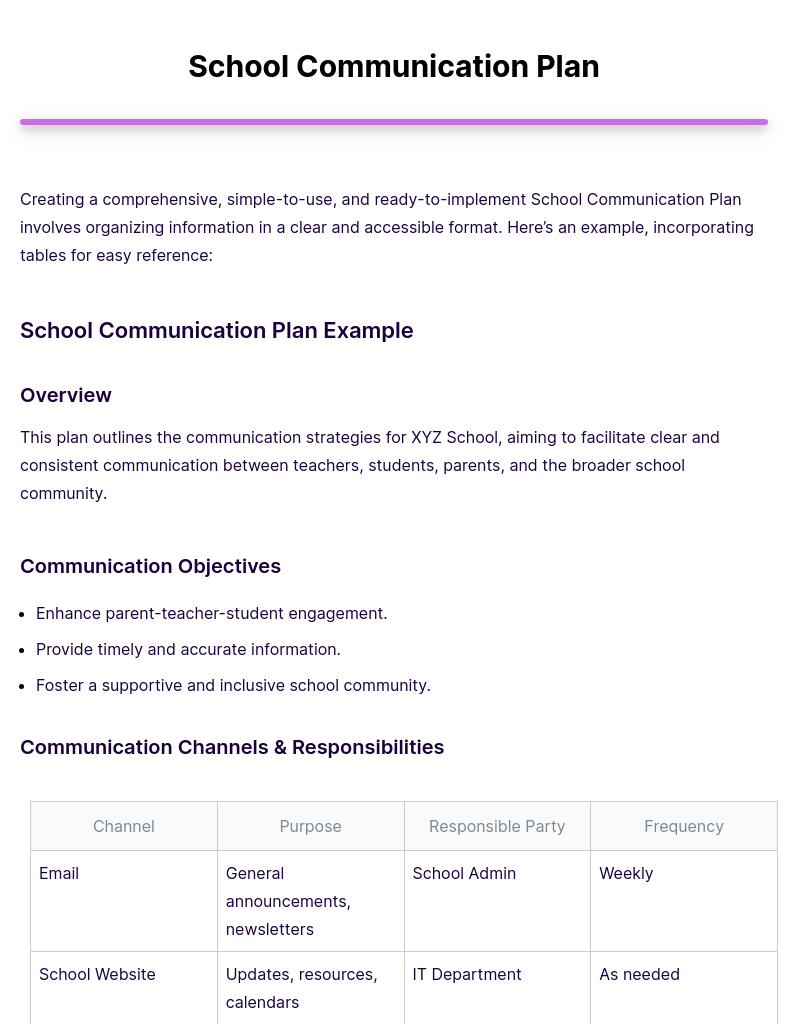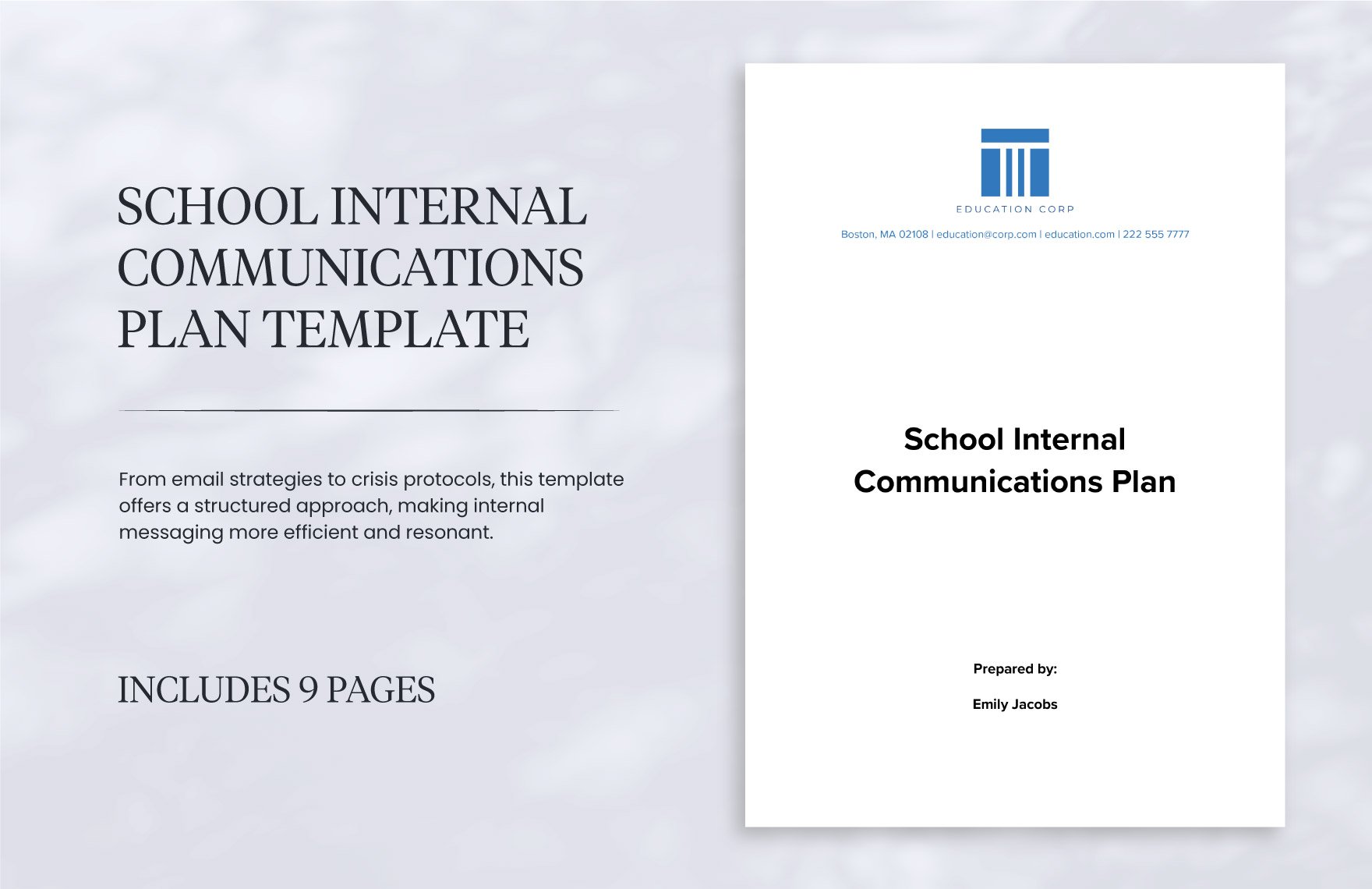9+ School Communication Plan Examples
Navigating the complexities of school communication requires a well-crafted plan. This guide provides an in-depth look at creating an effective School Communication Plan, including various strategies and Communication Examples. By integrating practical examples, this guide assists educators, administrators, and stakeholders in developing clear, efficient, and impactful communication approaches. Whether it’s for routine updates, engaging with the community, or managing crises, this guide covers all essential aspects to enhance the overall communication framework within the school environment.
Download School Communication Plan Bundle
School Communication Plan
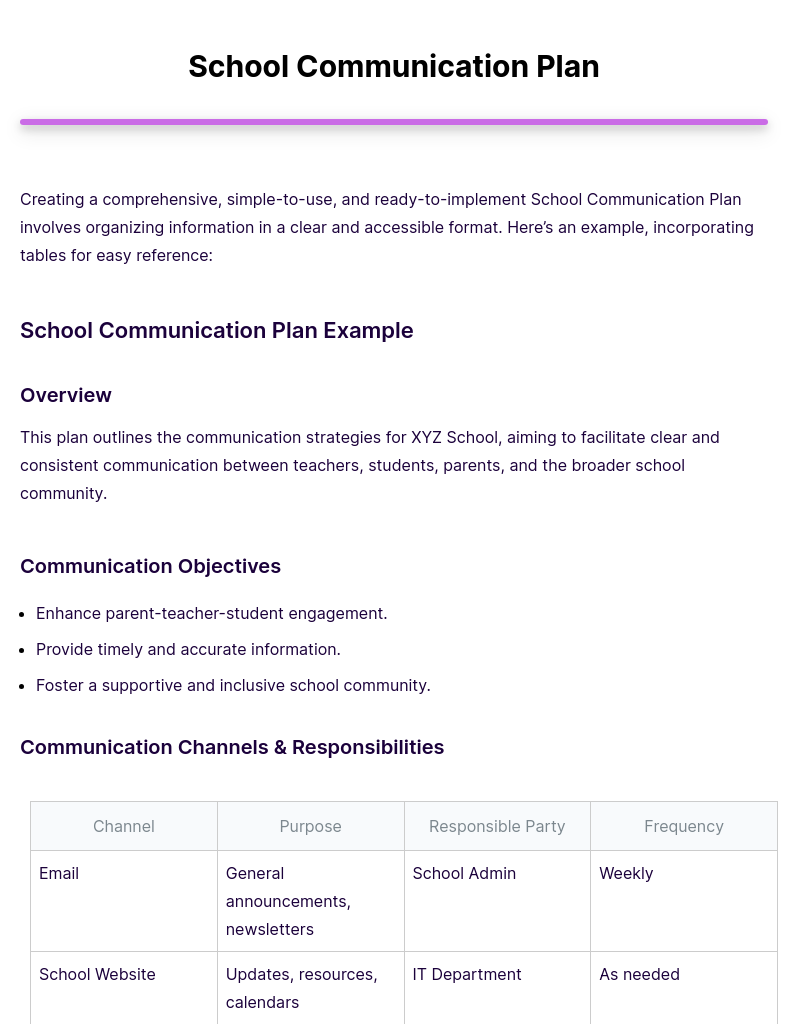
The School Communication Plan provides a detailed framework for creating and implementing a communication strategy in a school setting. It covers essential elements such as defining communication objectives, identifying stakeholders, choosing effective communication channels, and creating a content strategy. The guide also emphasizes the importance of regular updates, feedback mechanisms, and the need for a clear emergency communication protocol. This resource is designed to help educators and administrators enhance engagement and ensure efficient information dissemination within the school community
School Crisis Communication Plan
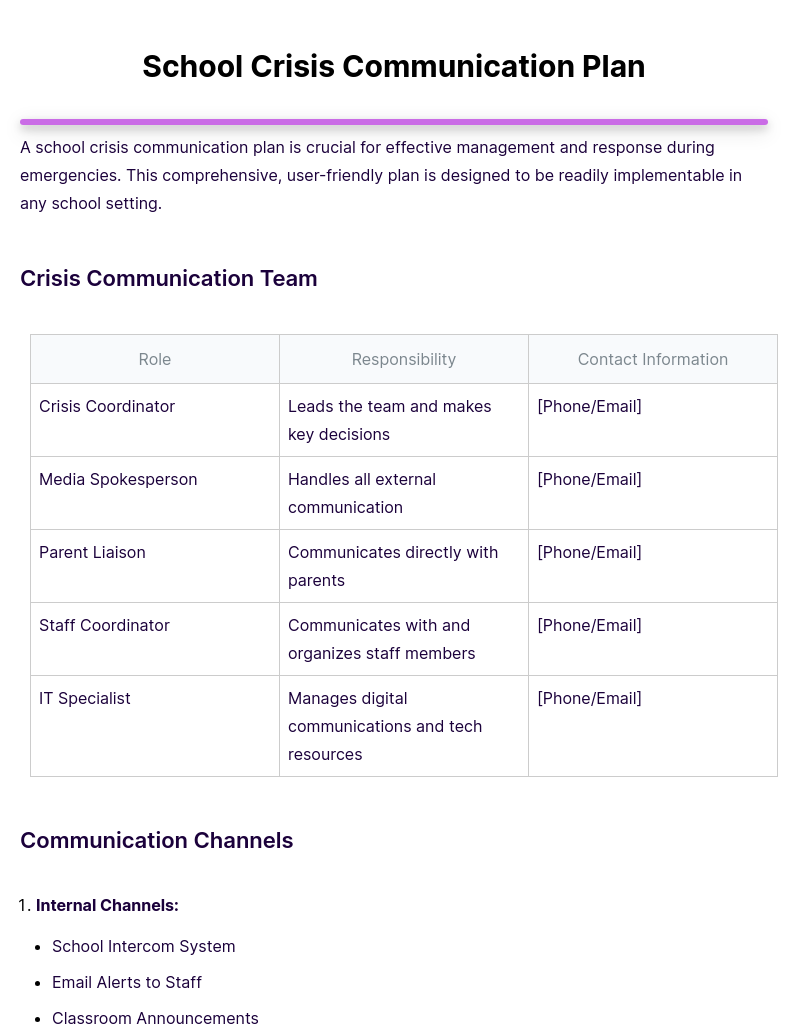
The School Crisis Communication Plan provides a detailed framework for handling emergencies in educational settings. It includes roles and responsibilities of the crisis communication team, various internal and external communication channels, and a step-by-step crisis communication protocol. The plan emphasizes the importance of immediate assessment, team activation, clear internal and external messaging, regular updates, and post-crisis evaluation. It also offers sample message templates for effective communication with parents and media during crises. This guide is essential for schools to ensure timely and accurate information dissemination while prioritizing safety and well-being during emergencies
Elementary School Communication Plan
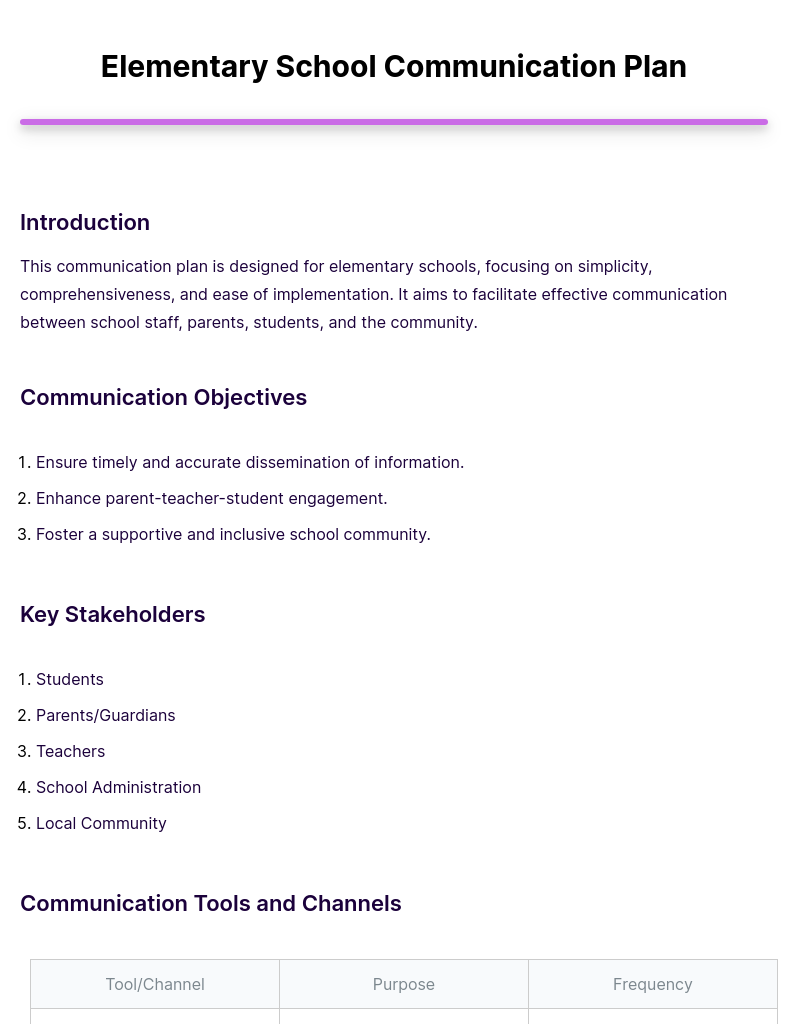
The Elementary School Communication Plan focuses on simplicity and effectiveness, aiming to facilitate strong communication between school staff, parents, students, and the community. The plan includes key components such as communication objectives, stakeholder identification, diverse communication tools and channels, defined roles and responsibilities, a communication schedule, and methods for feedback and evaluation. Additionally, it emphasizes the importance of clear emergency communication protocols. This guide is designed to be adaptable, ensuring all stakeholders are well-informed and actively engaged in the educational process
School Collaborative Communication Plan
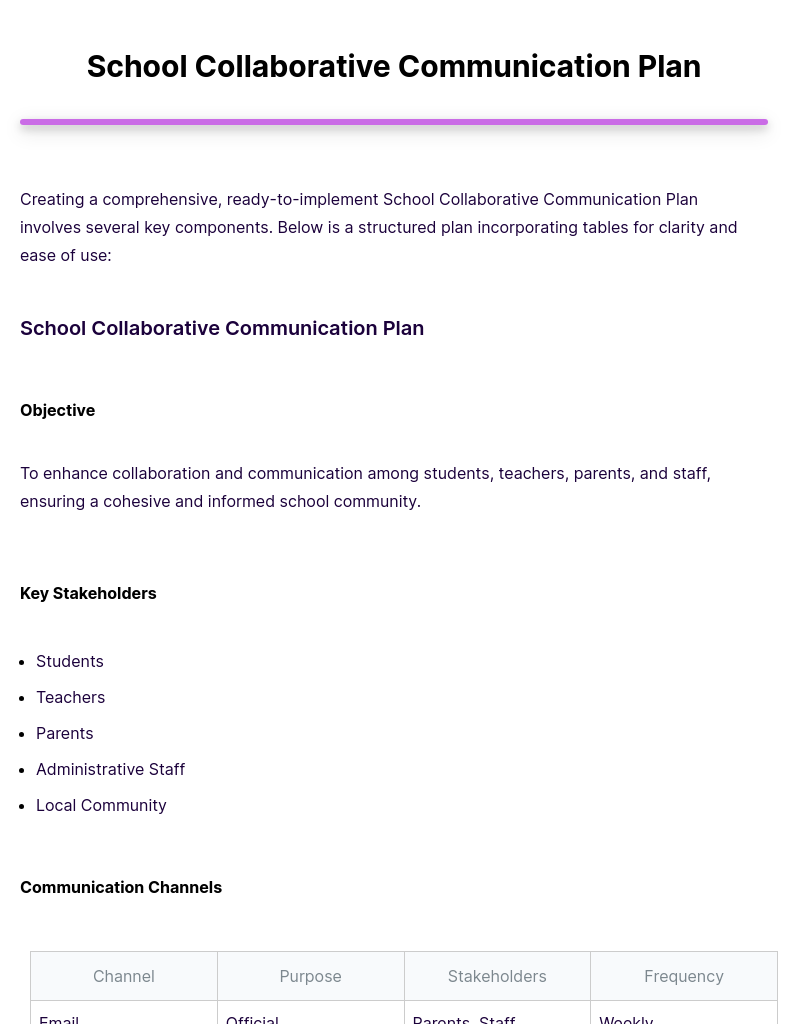
The School Collaborative Communication Plan offers a structured approach for enhancing communication and collaboration among students, teachers, parents, and staff in a school setting. The plan emphasizes the importance of various communication channels like emails, social media, and parent-teacher meetings, and outlines specific roles and responsibilities. It also includes strategies for content development, feedback collection, and emergency communication, ensuring a cohesive and informed school community. The plan is designed to be both simple and comprehensive, with a focus on regular evaluations and adaptability to feedback for continuous improvement.
School Communication Plan for Students
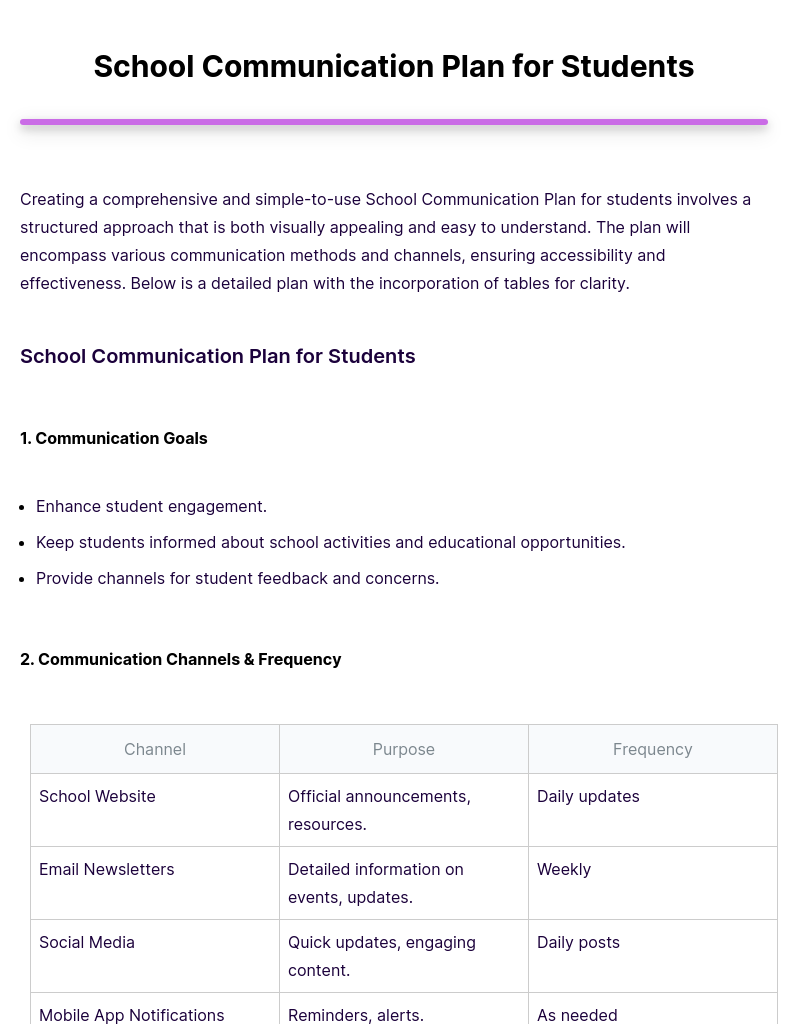
The School Communication Plan for Students plan is developing effective communication strategies within schools. It outlines key aspects such as setting communication goals, choosing appropriate channels, and establishing feedback mechanisms. The plan focuses on enhancing student engagement, keeping them informed about school activities, and providing platforms for feedback. With detailed sections on communication channels, key messages, roles and responsibilities, and monitoring and evaluation, this guide offers a comprehensive approach to fostering clear and efficient communication with students in a school environment
High School Communication Plan
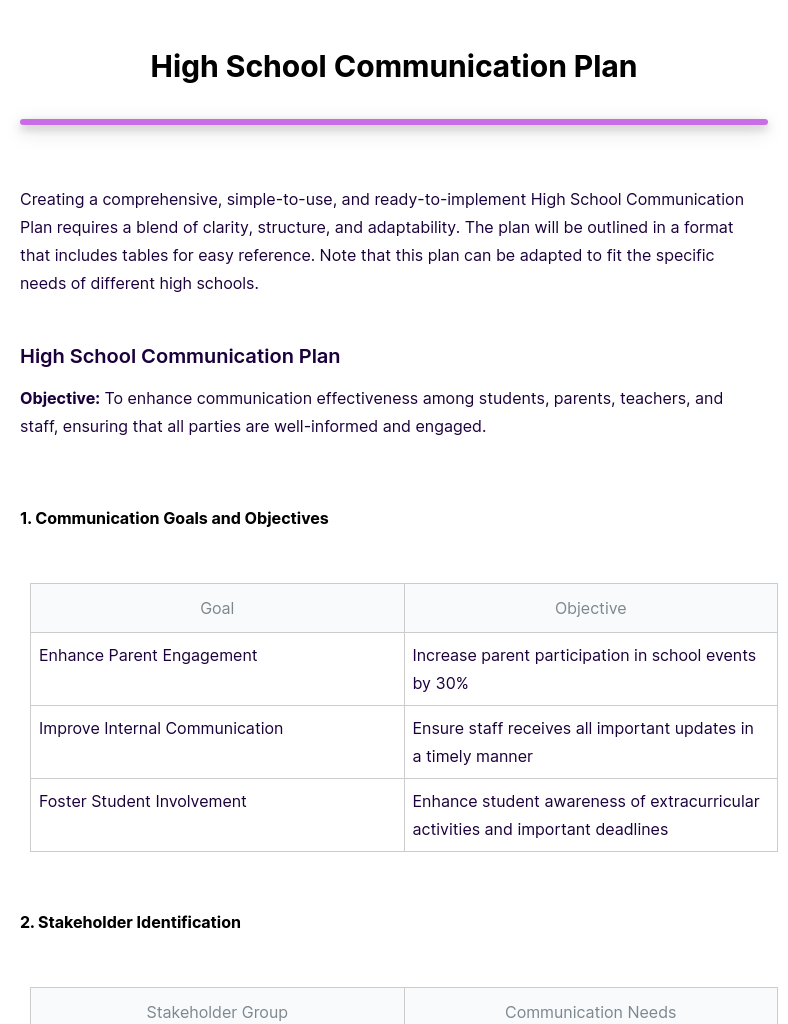
The High School Communication Plan is a thorough guide designed to enhance communication efficiency among students, parents, teachers, and staff. It includes detailed sections on communication goals, stakeholder identification, effective communication channels, content planning, and roles and responsibilities. The plan also incorporates mechanisms for feedback and evaluation, alongside protocols for emergency communication. It’s structured to be straightforward and adaptable, providing a strong foundation for a communicative educational environment.
School District Communication Plan
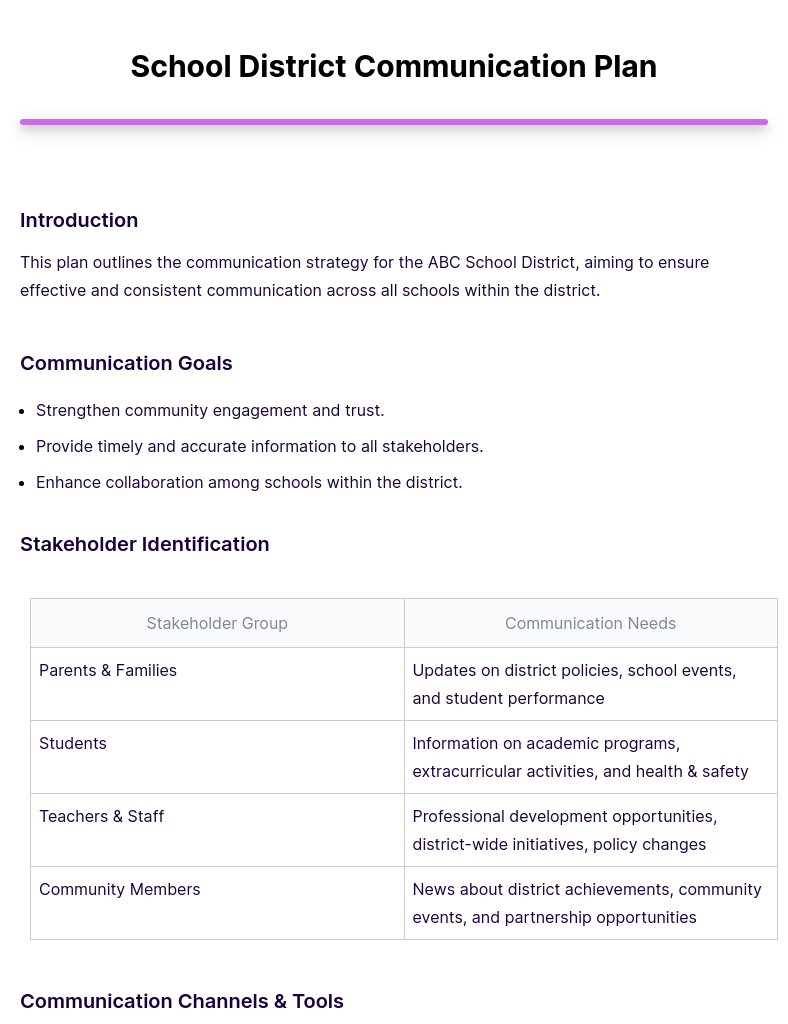
The School District Communication Plan is provides an insightful framework for establishing effective communication across a school district. It covers vital aspects like setting communication goals, identifying stakeholders, and choosing suitable channels. The plan emphasizes the importance of stakeholder engagement, regular updates, and emergency protocols, offering a structured approach for enhancing communication in educational settings. The guide is an excellent resource for administrators and educators aiming to improve communication strategies within their school districts
School Stakeholder Communication Plan Template
School Internal Communications Plan Template
School Communication Plan for Online Teaching
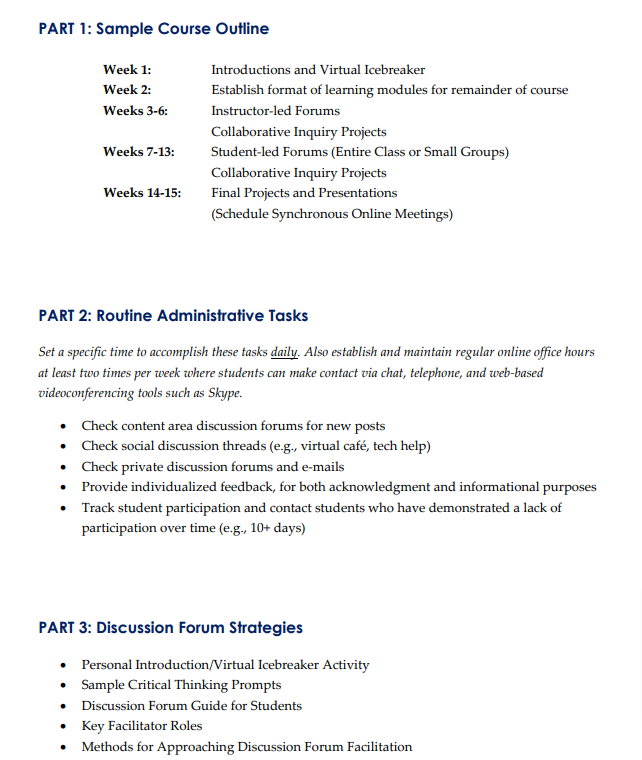
uca.edu
DownloadSchool Communication Management Plan
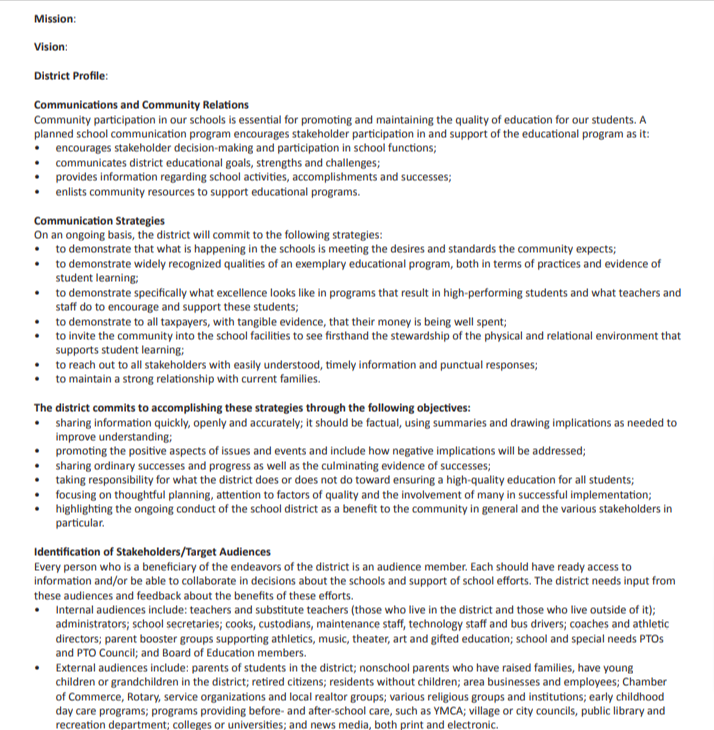
ohioschoolboards.org
DownloadSchool Communications Planning Checklist
A well-structured School Communications Planning Checklist ensures that every aspect of school communication is effectively addressed. This checklist offers a step-by-step guide to develop a comprehensive communication plan, focusing on clarity, inclusivity, and adaptability. It’s designed to cater to the diverse needs of the school community, enhancing engagement and information dissemination.
Checklist for Effective School Communication Planning
| Task | Description | Completed (Yes/No) |
|---|---|---|
| Define Communication Goals | Establish clear objectives for your communication efforts. | |
| Identify Stakeholders | List all parties involved in the school community. | |
| Select Appropriate Channels | Choose the best channels for different types of messages. | |
| Develop Content Strategy | Plan the content, tone, and frequency of communication. | |
| Assign Roles and Responsibilities | Designate team members for specific communication tasks. | |
| Create a Communication Calendar | Schedule regular updates and important announcements. | |
| Implement Feedback Mechanisms | Set up systems to gather feedback from stakeholders. | |
| Monitor and Evaluate | Regularly assess the effectiveness of the communication plan. | |
| Revise and Adapt | Make necessary changes based on feedback and evolving needs. | |
| Emergency Communication Protocols | Have a plan for urgent and emergency communications. |
Examples and Communication Sentences
- Define Communication Goals: Example: “Our goal is to enhance parent engagement and student awareness of school events.”
- Identify Stakeholders: Example: “Stakeholders include students, parents, teachers, staff, and local community members.”
- Select Appropriate Channels: Example: “We will use email for official announcements and social media for community engagement.”
- Develop Content Strategy: Example: “Our content will be informative, engaging, and reflective of our school values.”
- Assign Roles and Responsibilities: Example: “Ms. Smith will oversee our social media channels, while Mr. Jones handles email communications.”
- Create a Communication Calendar: Example: “Our calendar includes bi-weekly newsletters and monthly parent-teacher meetings.”
- Implement Feedback Mechanisms: Example: “We will conduct annual surveys to gather stakeholder feedback.”
- Monitor and Evaluate: Example: “We will review engagement metrics quarterly to assess the plan’s effectiveness.”
- Revise and Adapt: Example: “Based on feedback, we will adapt our strategies to improve communication.”
- Emergency Communication Protocols: Example: “In emergencies, we will use SMS alerts and website updates for immediate information dissemination
How to Create Effective School Communication Plan?
Creating an Effective School Communication Plan is vital for fostering a cohesive educational environment. This guide will walk you through the steps to develop a plan that meets the needs of your school community, ensuring clear and efficient communication.
Step 1: Identify Your Goals and Audience
Start by defining clear goals for your communication plan. Ask yourself what you want to achieve. Is it improved parent engagement, better student-teacher communication, or enhanced internal coordination among staff? Understanding your target audience – students, parents, teachers, and the wider school community – is crucial.
Step 2: Assess Current Communication Methods
Evaluate the existing communication channels within your school. Are they effective? What are the gaps? This assessment will help you identify the most suitable channels, whether it’s emails, newsletters, social media, or face-to-face meetings, for your School Communication Plan.
Step 3: Develop a Messaging Strategy
Your messaging should align with the school’s ethos and values. Plan the content, tone, and style of your communication. It’s essential to ensure that the messages are consistent, clear, and respectful, catering to the diverse needs of your school community.
Step 4: Choose the Right Tools and Channels
Based on your audience and message, select the most appropriate communication tools. This might include digital platforms like school websites or apps, social media, printed materials, or in-person events. A blend of various channels often works best to reach a wider audience.
Step 5: Define Roles and Responsibilities
Clearly outline who is responsible for each aspect of the communication plan. This might involve assigning a dedicated team or individuals responsible for generating content, managing social media, or updating the school’s website.
Step 6: Create a Communication Schedule
Develop a schedule for regular communication. This can include daily announcements, weekly newsletters, or monthly reports. The schedule should be flexible enough to accommodate urgent updates.
Step 7: Implement Feedback Mechanisms
Feedback is critical for the success of any communication plan. Include mechanisms for gathering feedback from all stakeholders. Surveys, feedback forms, and suggestion boxes are effective ways to gauge the effectiveness of your communication strategies.
Step 8: Monitor and Evaluate
Regularly assess the effectiveness of your communication plan. Analyze engagement metrics, review feedback, and adjust your strategies as needed. This ongoing evaluation will ensure your School Communication Plan remains relevant and effective.
Step 9: Update and Adapt
The educational landscape is ever-changing. Regularly update your communication plan to reflect new technologies, shifting stakeholder needs, and changes in school policies or procedures.
What are the Steps to Creating a School Communications Plan?
Developing a School Communication Plan is crucial for ensuring effective information flow among all stakeholders in an educational setting. Here’s a step-by-step guide to creating a comprehensive and effective plan.
Step 1: Define the Purpose and Objectives
Start by clearly defining the purpose of your School Communication Plan. What are the key goals you want to achieve? Whether it’s enhancing parent-teacher communication, improving internal staff coordination, or keeping students informed, having clear objectives is essential.
Step 2: Identify Stakeholders and Communication Needs
Identify who needs to be included in the communication process. This typically involves students, parents, teachers, school administration, and possibly the wider community. Understand the specific communication needs of each group to tailor your approach effectively.
Step 3: Choose Appropriate Communication Channels
Select the most effective channels for your messages. This could include email, social media, school websites, newsletters, or face-to-face meetings. The choice depends on the message’s nature and the audience’s preferences.
Step 4: Develop Content and Messaging Strategy
Plan the type of content you will communicate. This involves deciding on the tone, language, and frequency of the messages. Ensure that the content aligns with the school’s values and educational goals.
Step 5: Allocate Roles and Responsibilities
Assign specific roles and responsibilities related to the communication plan. This could involve designating a communication officer, a social media manager, or a team responsible for newsletter production.
Step 6: Establish Feedback Mechanisms
Incorporate ways to receive feedback from your communication efforts. Feedback mechanisms can include surveys, suggestion boxes, or interactive sessions, ensuring that the communication plan remains dynamic and responsive.
Step 7: Monitor and Evaluate
Regularly assess the effectiveness of your School Communication Plan. This involves monitoring engagement levels, analyzing feedback, and making necessary adjustments to improve the overall strategy.
Step 8: Update and Adapt
The educational environment is dynamic, so your communication plan should be adaptable. Update it regularly to reflect changes in technology, stakeholder needs, and school policies.
What are the Key Components of a Comprehensive School Communication Plan?
A Comprehensive School Communication Plan is essential in establishing a strong, effective connection among students, parents, teachers, and other stakeholders in the school community. Here, we delve into the key components that make such a plan successful and impactful.
Clear Objectives and Goals
The foundation of any robust School Communication Plan lies in its objectives. Define clear, measurable goals such as enhancing parent engagement, improving internal communication, or raising awareness about school policies and events. These objectives guide the direction and focus of all communication efforts.
Stakeholder Identification and Analysis
Identifying and understanding your audience is crucial. Different stakeholders – students, parents, teachers, staff, and the wider community – have varying communication needs and preferences. Tailoring your approach to suit these diverse groups ensures that your messages are effective and well-received.
Selection of Appropriate Communication Channels
Choosing the right channels to deliver your messages is vital. Options can range from traditional newsletters and parent-teacher meetings to digital platforms like social media, school websites, and email blasts. The choice depends on the nature of the message and the audience you are targeting.
Content Development and Messaging Strategy
Develop a content strategy that aligns with your school’s values and the needs of your audience. This includes planning the tone, style, and frequency of your messages. Consistency in messaging reinforces trust and clarity in your school’s communication.
Roles and Responsibilities
Assign clear roles and responsibilities to staff members within the crisis communication framework. This might involve a dedicated communications team responsible for managing different aspects like social media, website updates, or press releases.
Feedback Mechanisms
Implementing feedback mechanisms allows you to gauge the effectiveness of your communication plan. Surveys, feedback forms, and suggestion boxes are great ways to collect insights from your audience, enabling continuous improvement.
Regular Monitoring and Evaluation
Continuously monitor and evaluate the effectiveness of your communication strategies. This involves analyzing engagement metrics, assessing the reach of your messages, and making necessary adjustments to improve the plan’s effectiveness.
Emergency Communication Protocol
Having a well-defined emergency communication protocol is critical. This ensures timely and accurate dissemination of information during crises, maintaining safety and minimizing confusion.
Plan Adaptation and Flexibility
The educational landscape is dynamic, necessitating regular updates and adaptations to your communication plan. Stay abreast of new technologies, changes in stakeholder needs, and evolving school policies to keep your communication strategies relevant and effective.
The key aspects of a comprehensive school communication plan. These include the use of traditional paper/email methods, maintaining an updated website, utilizing Learning Management Systems for personalized engagement, and leveraging smartphone apps for direct communication. The article emphasizes the importance of consistency, clarity, accessibility, regular updates, and providing support and training in any communication plan. This approach ensures that schools can effectively bridge traditional and digital communication methods, thereby reaching all stakeholders efficiently.
Creating a robust school communication plan, emphasizing the importance of effective implementation of school communication plan and continuous improvement. It discusses various communication strategies a school might use to engage with stakeholders and highlights resources for drafting communication plans focused on implementing new strategies. The guide includes examples and tools for creating a plan, emphasizing stakeholder engagement as a critical part of the school planning process.



